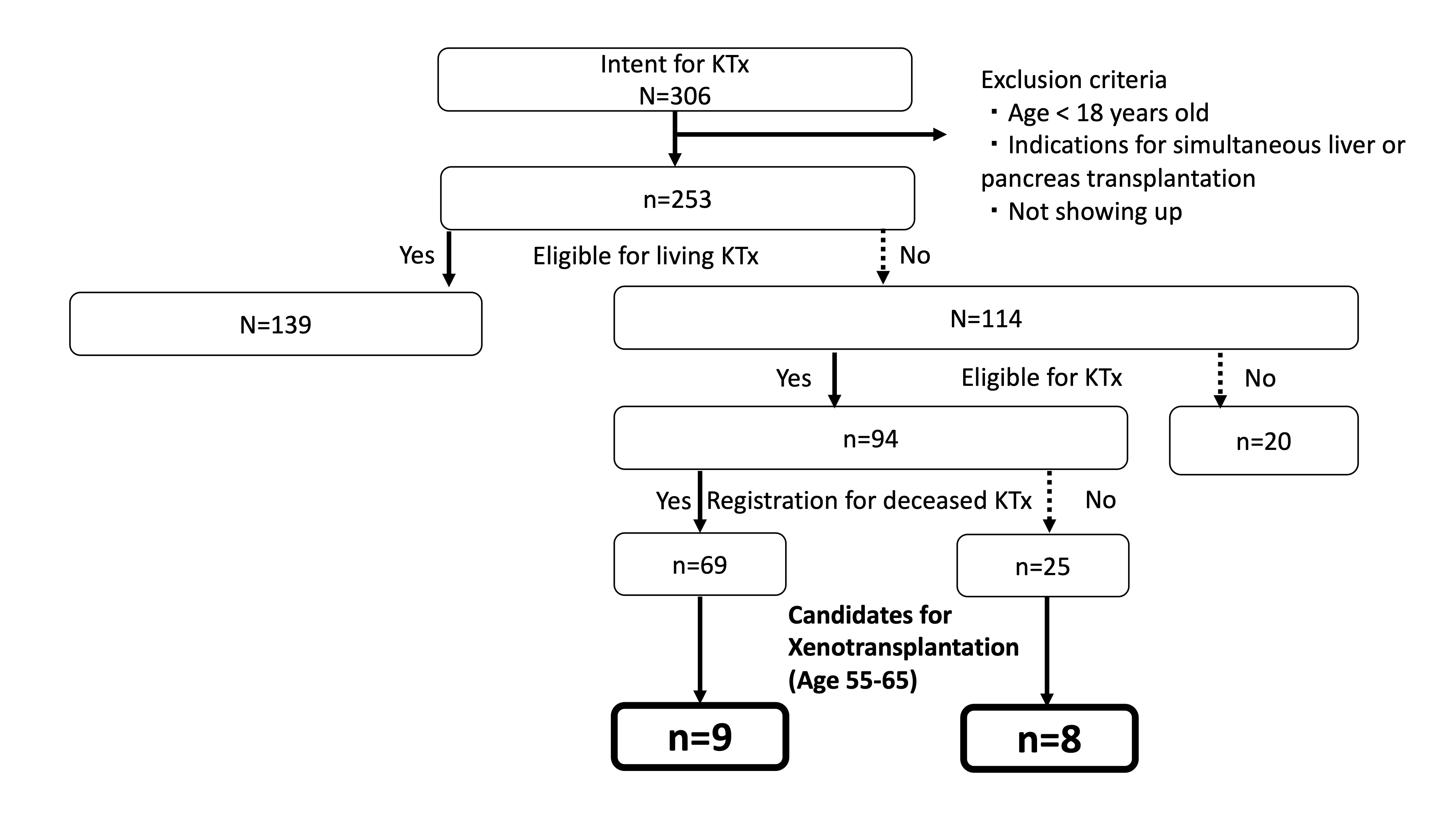How many potential candidates are there for clinical kidney xenotransplantation in Japan?
Takayuki Hirose1, Kiyohiko Hotta1, Naoya Iwahara1, Takashige Abe1.
1Urology, Hokkaido University Hospital, Sapporo, Japan
Purpose: Kidney transplantation is the only curative therapy for end-stage kidney disease, but a critical donor organ shortage means many appropriate candidates never receive transplantation. Novel gene editing tools have enabled advanced genome engineering of porcine donors, and a few clinical cases have undergone transplantation from gene-edited pigs by compassionate use. Such as those recipients, candidates for xenotransplantation should be somewhat old and most unlikely to receive allotransplantation due to high levels of anti-HLA antibodies. In Japan, the average waiting period for deceased kidney transplantation has lengthened to 16 years. Due to an exceedingly long waiting time, so many patients have declined the registration for deceased donor kidney transplantation in Japan. This study was aimed at assessing the number of xenotransplant candidates in Japan.
Methods: Two hundred fifty-three patients who presented to our facility from 2016 to 2023 were enrolled in this study. Exclusion criteria were age under 18 years old, indications for simultaneous liver or pancreas transplantation, or those who did not show up before a clinical decision was made. The number of patients at age 55-65 years old who are supposed to be potential candidates for xenotransplantation were evaluated out of the patients who were ineligible for living kidney transplantation.
Results: Out of 253 patients, 150 were male and 103 were female. The median age was 50 (18-76) years old. The number of those who are eligible for living kidney transplantation (already done or waiting) was 139 (Figure). Among the remaining 114 without indication for living kidney transplantation, 94 were found eligible for transplantation, while the other 20 had to abandon transplantation because of their own medical problems. Out of the 94, 69 registered to the waiting list, but the remaining 25 did not. Those who were 55-65 years old were 9 out of 69 (13.0%) in the patients with registration, while 8 out of 25 (32.0%) were in those without registration.
Conclusions: The study suggested that there are a substantial number of candidates for kidney xenotransplantation among those who were ineligible for living kidney transplantation in Japan. The need for clinical application of xenotransplantation is tremendously high in Japan due to an extremely long waiting time.

References:
[1] Kidney
[2] Clinical application
Lectures by Takayuki Hirose
| When | Session | Talk Title | Room |
|---|---|---|---|
|
Tue-30 16:20 - 17:10 |
Organ Xenotransplant - Clinical Application 2 | How many potential candidates are there for clinical kidney xenotransplantation in Japan? | Auditorium |
